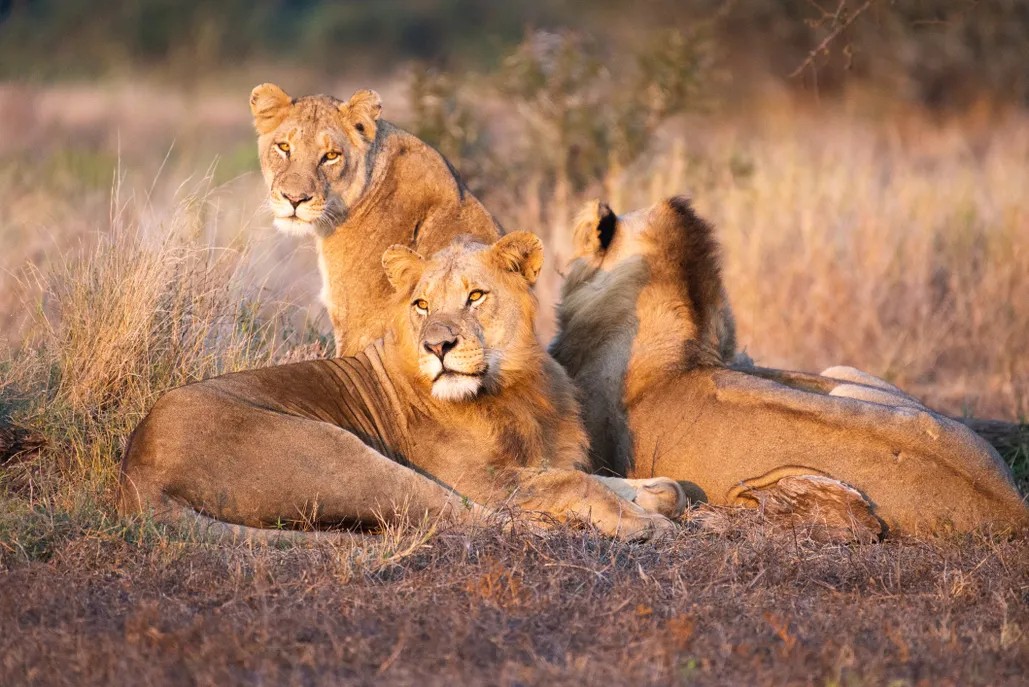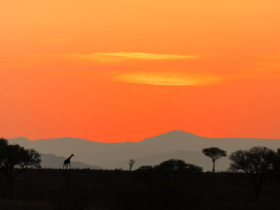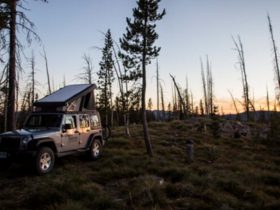Introduction: What Is a Big Five Safari?
A Big Five safari is more than just a wildlife viewing experience—it’s a journey into the heart of Africa’s most untamed landscapes. The term “Big Five Safari” originally referred to the five most challenging animals to hunt on foot: the lion, African elephant, Cape buffalo, leopard, and rhinoceros. Today, it symbolizes the ultimate wildlife experience for safari enthusiasts, wildlife photographers, and adventure seekers. These majestic creatures represent power, beauty, danger, and survival, offering travelers a rare glimpse into the raw power of the African wilderness. A Big Five safari brings you face to face with these icons in their natural habitats, usually in Africa’s most famous national parks and game reserves.
Meet the Big Five Animals
1. African Lion: The King of the Jungle
The African lion is perhaps the most celebrated of the Big Five, often referred to as the “King of the Jungle,” despite living in open savannas. Lions are social creatures that live in prides, typically consisting of one or two adult males, several related females, and their cubs. Observing lions in the wild, especially during hunting or mating behavior, is an awe-inspiring experience. They can be seen lounging under acacia trees, guarding their territory, or stealthily stalking prey. Male lions are recognizable by their impressive manes, while females are the primary hunters of the pride. Lions are best seen during early morning or late afternoon game drives when they are most active.
2. African Elephant: The Gentle Giant
The African elephant, the largest land animal on Earth, is a symbol of wisdom and strength. On safari, witnessing these majestic creatures roam through the bush, interact socially, or bathe in rivers is nothing short of magical. They are highly intelligent and emotional animals, often forming deep family bonds. An adult male (bull) can weigh over 6,000 kg, with massive tusks used for digging, stripping bark, and defense. Safaris in places like Chobe National Park in Botswana or Amboseli in Kenya offer excellent elephant viewing, often with hundreds of individuals gathered around watering holes.
3. Cape Buffalo: The Most Dangerous of the Five
Don’t let its cow-like appearance fool you—the Cape buffalo is considered one of Africa’s most dangerous animals due to its unpredictable temperament. Often found in large herds, buffalo are powerful, resilient animals known to defend themselves fiercely against predators, even lions. Their sharp horns and solid build make them formidable opponents. On a Big Five safari, spotting a herd of buffalo grazing across the plains or wallowing in muddy pools is a common sight. Despite their intimidating reputation, they are crucial to the ecosystem and a favorite target for wildlife photographers.
4. Leopard: The Elusive Predator
Of all the Big Five, the leopard is the hardest to spot. These solitary and nocturnal cats are masters of stealth and camouflage, often seen lounging in trees during the day or moving silently through the bush at night. Their spotted coats blend perfectly with the dappled light of the forest, making them nearly invisible. Leopards are powerful hunters capable of dragging prey twice their size up into the treetops to avoid scavengers. The best way to spot a leopard is with the help of experienced guides, especially in areas like South Luangwa (Zambia), Sabi Sands (South Africa), and the Maasai Mara (Kenya).
5. Rhinoceros: The Prehistoric Survivor
Rhinoceroses—both black and white species—are powerful, ancient creatures that are sadly among the most endangered members of the Big Five due to poaching. White rhinos are larger and more social, while black rhinos are more solitary and aggressive. They are most easily seen in protected reserves such as Kruger National Park, Hluhluwe-iMfolozi in South Africa, or Ol Pejeta Conservancy in Kenya. Spotting a rhino in the wild is a rare and emotional moment, underscoring the importance of conservation efforts to protect these iconic animals.
Top Big Five Safari Destinations in Africa
Africa is home to many incredible safari destinations, but a few stand out for offering exceptional opportunities to see all five members of the Big Five in one trip. Here are some of the most renowned:
1. Kruger National Park, South Africa
One of the best places in the world to see the Big Five, Kruger National Park offers vast landscapes, excellent roads, and a wide variety of accommodations. With experienced rangers and numerous private reserves like Sabi Sands bordering the park, your chances of spotting all five in a single trip are high.
2. Maasai Mara, Kenya
Famous for the Great Migration, the Maasai Mara is also one of the top destinations for Big Five safaris. Lions, leopards, elephants, and buffalo are commonly seen, and rhino sightings are possible with a bit of luck. The Mara’s open plains also make for excellent photographic opportunities.
3. Serengeti National Park, Tanzania
As the other half of the Great Migration corridor, the Serengeti is home to all Big Five animals. Its sheer size, wildlife density, and breathtaking scenery make it a favorite among safari-goers. The Serengeti is especially known for its large lion population and spectacular predator action.
4. Okavango Delta, Botswana
The Okavango Delta offers a unique safari experience with mokoro (dugout canoe) rides through floodplains and waterways. It’s one of the few places where you can see all Big Five in such a lush, water-rich environment. Moremi Game Reserve and Chobe National Park are nearby and also prime Big Five areas.
5. Etosha National Park, Namibia
Although less well-known for rhino sightings, Etosha offers excellent views of lions, elephants, and buffalo. It’s particularly great for self-drive safaris and features large salt pans that attract diverse wildlife.
Best Time to Go on a Big Five Safari
The best time for a Big Five safari depends on your destination, but generally, the dry season (May to October) offers the best wildlife viewing. During this period, animals congregate around water sources, and the sparse vegetation makes it easier to spot them. However, the green season (November to April) brings beautiful landscapes, fewer crowds, and excellent birdwatching, though spotting wildlife can be slightly more challenging due to thick vegetation.
Tips for an Unforgettable Big Five Safari
- Choose the Right Guide or Tour Operator
A knowledgeable guide enhances your experience significantly. Look for certified operators with good reviews and strong conservation values. - Pack Smart
Bring neutral-colored clothing, binoculars, a camera with a zoom lens, sunscreen, insect repellent, and a hat. Mornings can be cold, so dress in layers. - Be Patient and Observant
Wildlife sightings are not guaranteed. Listen carefully, stay quiet, and trust your guide’s instincts. Sometimes, the best moments happen when you least expect them. - Respect Wildlife and Nature
Always follow park rules, never feed animals, and maintain a safe distance. Remember, you are in their home. - Support Conservation
Consider choosing lodges and tours that actively support anti-poaching initiatives, community engagement, and wildlife research.
The Importance of Conservation in Big Five Safaris
While the thrill of seeing the Big Five is unmatched, it’s vital to recognize the conservation challenges facing these animals. Poaching, habitat loss, and human-wildlife conflict continue to threaten their populations, especially rhinos and elephants. Many safari lodges and tour operators partner with conservation groups, using tourism revenue to fund anti-poaching units, wildlife corridors, and educational programs. As a traveler, your choice of ethical operators and eco-lodges helps protect these animals for future generations.
Conclusion: Why the Big Five Safari Should Be on Your Bucket List
A Big Five safari is not just a trip—it’s an emotional, educational, and thrilling experience that connects you with the untamed beauty of nature. From the roar of a lion echoing through the savanna to the sight of a baby elephant trailing its mother, every moment is packed with wonder and awe. Whether you’re a first-time visitor or a seasoned explorer, the Big Five safari offers memories that will last a lifetime. By choosing responsible travel options, you also contribute to preserving Africa’s most iconic wildlife. It’s time to pack your bags, charge your camera, and head into the wild for the adventure of a lifetime.
FAQs About Big Five Safari
Q1. How long should a Big Five safari be?
A typical safari lasts 3 to 7 days, but longer trips increase your chances of seeing all five animals and exploring multiple parks.
Q2. Are Big Five safaris safe?
Yes, when led by experienced guides and following all safety instructions, Big Five safaris are safe and suitable for families and solo travelers.
Q3. Can I see the Big Five in one park?
Yes, parks like Kruger (South Africa) and Maasai Mara (Kenya) offer the possibility of seeing all Big Five in one location.
Q4. What’s the best country for a Big Five safari?
South Africa, Kenya, Tanzania, Botswana, and Namibia are all excellent, depending on your travel style, budget, and season.











